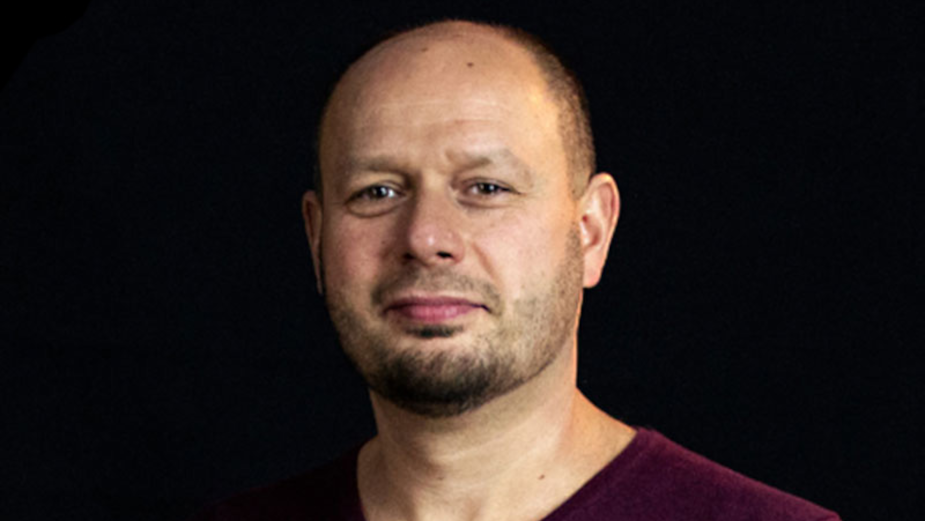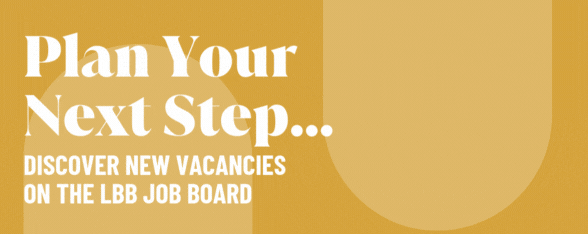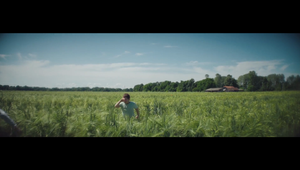
The Digital Factory Worker: Catch Up with VFX Supervisor Róbert Erdélyi

Robi was initially a GYÁR 'worker' himself: he was in charge of visual effects, but now, due to the many requests he receives, he mainly works as a producer to manage the various projects. The CGI and visual effects work has been taken over from him, but this is basically what the whole business has grown from.
Without Computer Graphic Images (CGI), it's impossible to make a film nowadays, and not just the spectacular digital monsters that appear in the film, but also the little post-production work that can be done to perfect a location from 500 years ago, when light poles were not part of the urban landscape.
"90% of the scenes of films shot today have to be digitally post-processed, without this there is no perfect film experience, as there is always an out-of-place landmark on the frames, a background element that needs to be retouched. Lighting or digital editing is also part of our work," says Róbert Erdélyi.
Their most recent work, a commercial for PreVital cat food (directed by Péter Bergendy), is the ultimate CGI experience. Here the main character of the commercial, the cat, is a fully digitally created creature. For this project, Robi was the VFX producer, i.e. he brought the team together: when creating the visual effects, he chose the method, software and technology to work with. We also need a dedicated producer for visual effects, as the profession has grown to the point where it's impossible to imagine a shoot without one. In a film based on CGI techniques, it is also necessary to shoot on location, because you need to capture the real characters, the environment and the location. The cat, for example, was replaced by a remote-controlled car so that the actors could interact with the protagonist and all the movements were appropriate. The car was then replaced by the digital cat on the computers.
From Commodore 64 to digital effects
Robi Erdélyi soon found his path and what he wanted to do exclusively for the rest of his life: a combination of creative work and IT. At primary school in Kecskemét, he had a brilliant drawing teacher, graphic designer and animation film director László Hegyi Füstös, who was also an important member of the local branch of Pannonia Studio. He was involved in the production of such highly successful Hungarian animation films as The Hungarian Folk Tales, The Water Spider and Ludas Matyi. It was from him that Robi got his first inspiration: already then he thought he would like to do something similar: film graphics and animation would be a good field to work in. At the same time, he started to get acquainted with the world of information technology in Hungary. The eleven-year-old boy was completely captivated. In addition, an IT association called Logi-Klub was set up in Kecskemét for young people, where young people from Kecskemét who were interested in computer science could meet, but also invited professionals from other parts of the country to events. Robi's first trip after school almost always took him here, where he socialised, made friends, played games and programmed. And after a few years, at the age of 15 or 16, he and his friends from here also formed a game development team. Many of them already had their own computers at home (typically depleting the family budget), but the city also provided the technical equipment for the computer club.
"It felt a bit like how Macintosh developers might have started out in their garage. Almost all of the people I started with at Logi-Klub have stayed in the same line: in Japan, in Los Angeles, but also in prominent positions around the world, using their IT skills," says Robi, who says that something big really started in Kecskemét then and there.
You can only do this as a true fan
This was followed by a period of three to four years when Robi became self-taught in 3D animation, practically to the point where he could make animations lasting a few minutes. They were part of a team of young game developers who programmed and made the game itself, and Robi and his friends made 3D animations for it, which turned into a game trailer.
With the knowledge and experience gained, they also put together a book with a friend on how to use 3D Studio software: Robi proofread it and his friend summarised the information about the software. This became the first book on the subject in Hungarian. So the high school years passed quickly with lots of programming and work. And Robi realised early on that this was all he wanted to do, nothing else.
Although Kecskemét gave him the perfect foundation, the next step for Robi was Budapest. Here, at the age of twenty, he got the opportunity to work at Rotoscope Graphic Studio, founded by Gábor Kovács, which was the first 3D computer animation studio in Hungary. In less than half a year, seeing his knowledge and the drive he put into his work, he was already being entrusted with 'proper' jobs.
"I never really had to look for a job, I was always called somewhere" - by his own admission, he worked in almost all the studios in Hungary (Post Adison, Malone Effects, Focus-Fox). But he also spent a year in Los Angeles as an application engineer for a software company which created Maya as well. This was a particular honour for him, as he was the only person from Hungary to be invited to work there.
In the meantime, he has been going to professional exhibitions in Hungary and abroad to keep up with the development of the technology, and has even given presentations (Stuttgart - FMX, Los Angeles, Las Vegas). So he slowly got into the professional circles, without actually having studied anywhere in school.
The Factory.
At Focus-Fox, he met Gergely Gazsi, his current business partner, who was working as an artist, and in 2006 they founded their own company, which became GYÁR (it means factory in Hungarian). It sounds simple when you write it down, but they have a lot of experience, a lot of work and a lot of all nighters are behind them.
"It's a very ass-kicking business, it's all about how quickly you can solve the problem you have," says Robi, giving us a behind-the-scenes insight.
GYÁR produces 3-400 commercials a year. Of course, not all of them feature a cute cat or a flaming miracle deer, there are many that require less creativity but need the same precision and attention: for example, they put together the weekly packshot materials for the Aldi commercial food chain. There are about twenty outstanding big jobs a year. They also work on feature films, which is a bit more relaxed: there's no such rush and time pressure as in the case of commercials. There's time to work out visual tricks and jobs more thoroughly and to get more immersed in the material you're given. Fortunately, they have a lot of work coming in from London, and they also have a partner company in Poland, through whom they get a lot of enquiries. This is also good because Robi thinks Hungarian film is underperforming at the moment. In his experience, it's harder to find good work now because of the loss of creative jobs in recent years. One reason for this could be that Hungarian creative agencies are very percentage players, not daring to dream big, afraid of the client's reaction: maybe just in the case of special digital solutions. The technical conditions and the skills are there, professionals can do practically anything in this country that we see in foreign films. Hungarians work on the same systems as elsewhere in the world, and even have custom composite systems that are unique in Europe - which you can see only in London. They use Houdini software to do the visual effects, and they have people who know how to use its technology. In this country, the obstacles are more in the mind. Robi says they don't have the courage to take advantage of the opportunities, and it's harder to sell to the client. It should be noted, however, that a film based on visual effects is much more expensive than a live-action film, where no such tricks are used at all.
In front of the greenbox
"For commercials, agencies usually come with a ready-made concept. But of course you can change it on the fly, we can give you advice if you need it, it's a fully interactive process. Robi is also responsible for client management. It’s important to have a good relationship with everyone involved in the workflow. In the preliminary meeting, you have to find the right tone with the client and you can brainstorm and come up with the concept together.
Often scenes are shot in a studio in front of a greenbox and the right backdrop needs to be edited behind the actors, as if the shoot was taking place on location. There are colleagues and supervisors who go out to the sets, but Robi prefers to capture the creative part of the work. There are a lot of mistakes in the footage they can only work with: depending on the time or location of the scene, there can be a lot of inappropriate objects that need to be retouched on the moving image. These are more visual effects and tricks, but they do not include computer generated characters or digitally created objects. Which also requires this kind of work and skill.
Large-scale Hollywood feature films and commercials have really upped the visual culture and the audience's visual threshold: even the layman can spot when something is not so pretty or perfect. One of the consequences of this is that today's customers are not accepting less professional solutions. It takes serious technical background and expertise to stay afloat. It is a profession that is constantly evolving at a tremendous speed, so those who work in it have to keep up with the changes and learn all the time. Anyone who wants to get ahead in this field is likely to be passionate about it. For them it is not difficult to keep up to date with the latest technical developments and discoveries that come out every week.
A real factory unionist
Seven or eight years ago, Robi and his friends from the industry set up the Hungarian Film Postproduction Association, an organisation for postproduction studios. He now leads the association, which brings together studios that share the same platform but have little communication with each other. The members meet a few times a year to discuss current professional issues. Robi feels that this is a huge step forward and a success for the founders: the different studios are thinking together and not necessarily seeing each other as a competitor. They share information.
Róbert Erdélyi says he has found a medium in which he feels comfortable: "Three weeks off is the maximum I can imagine without my job, after that I would definitely miss it, plus most of my friends are from here, so I never want to stop doing this. Every film is a new challenge and a special one. When I work on one, that's the most important thing."










